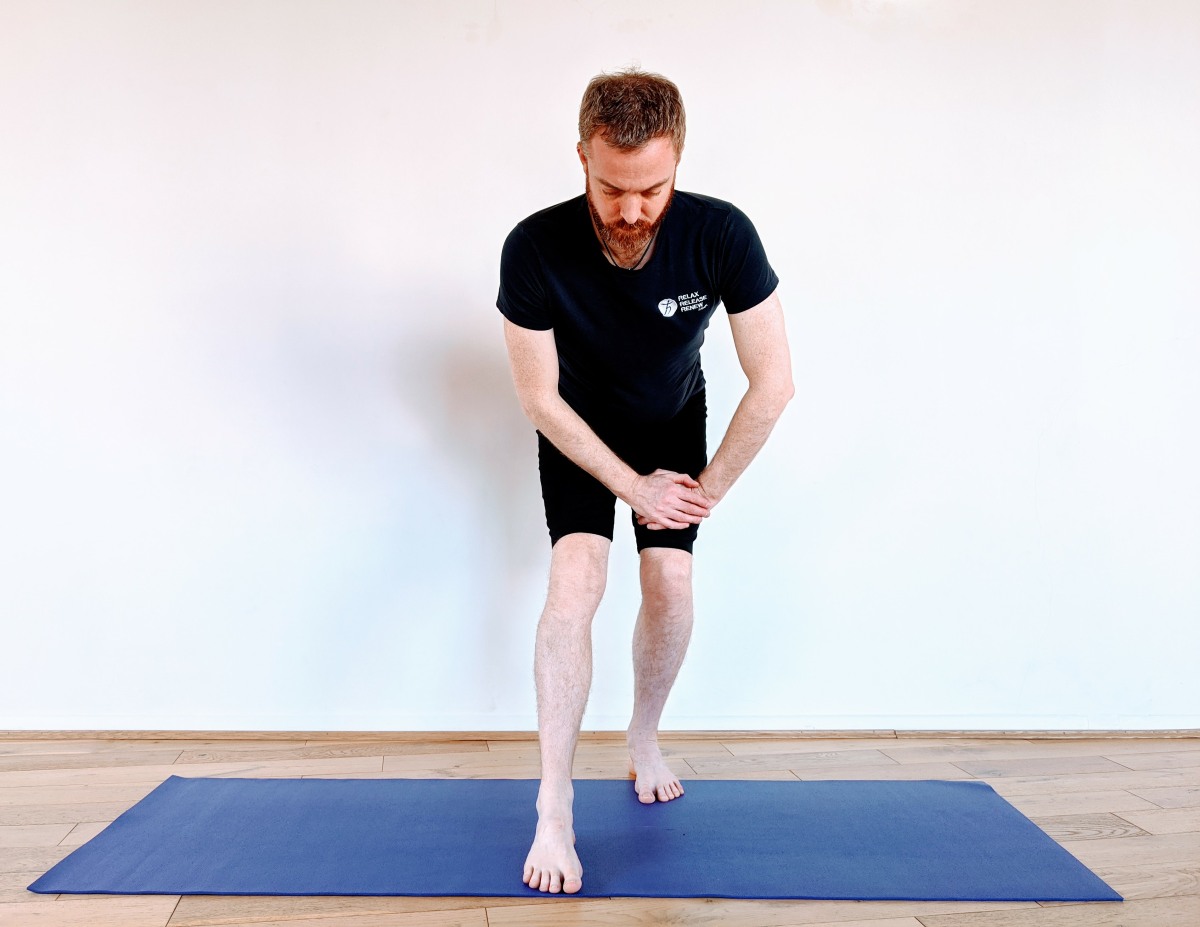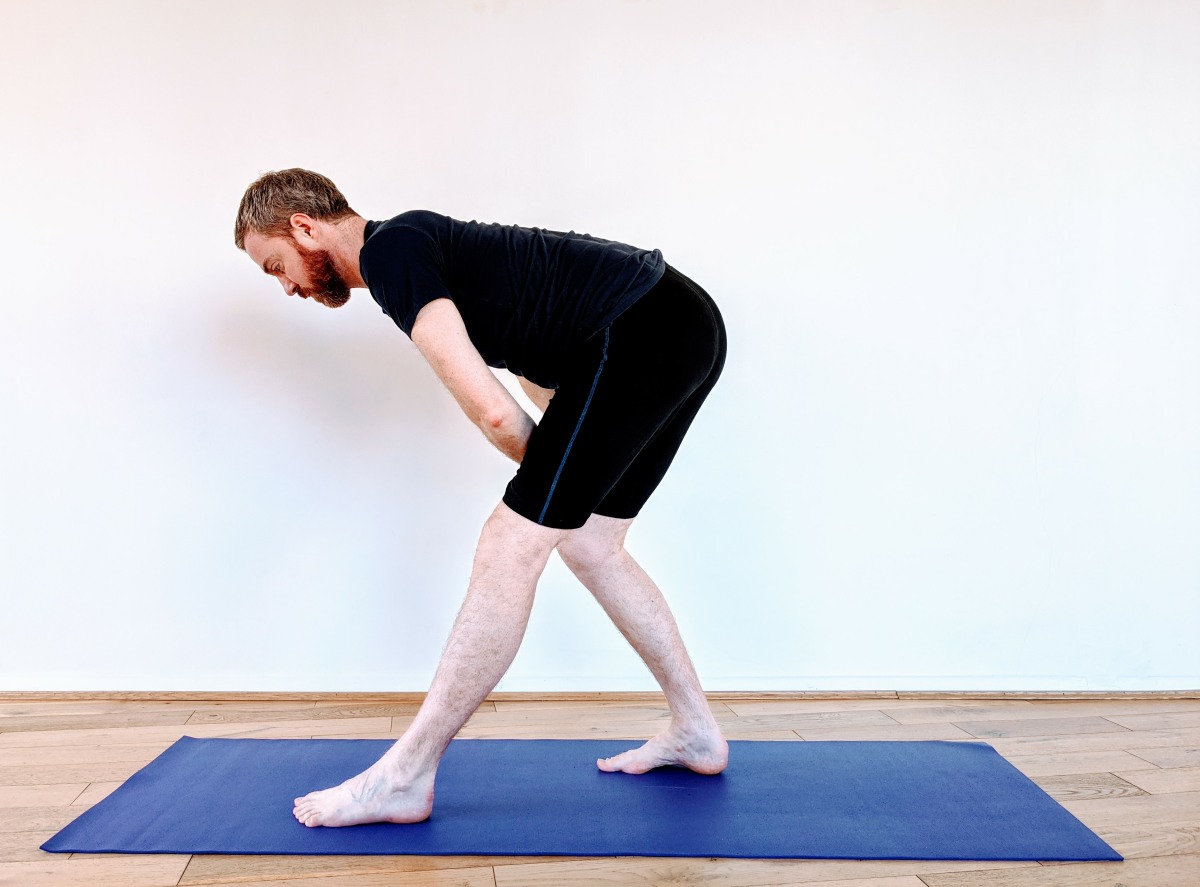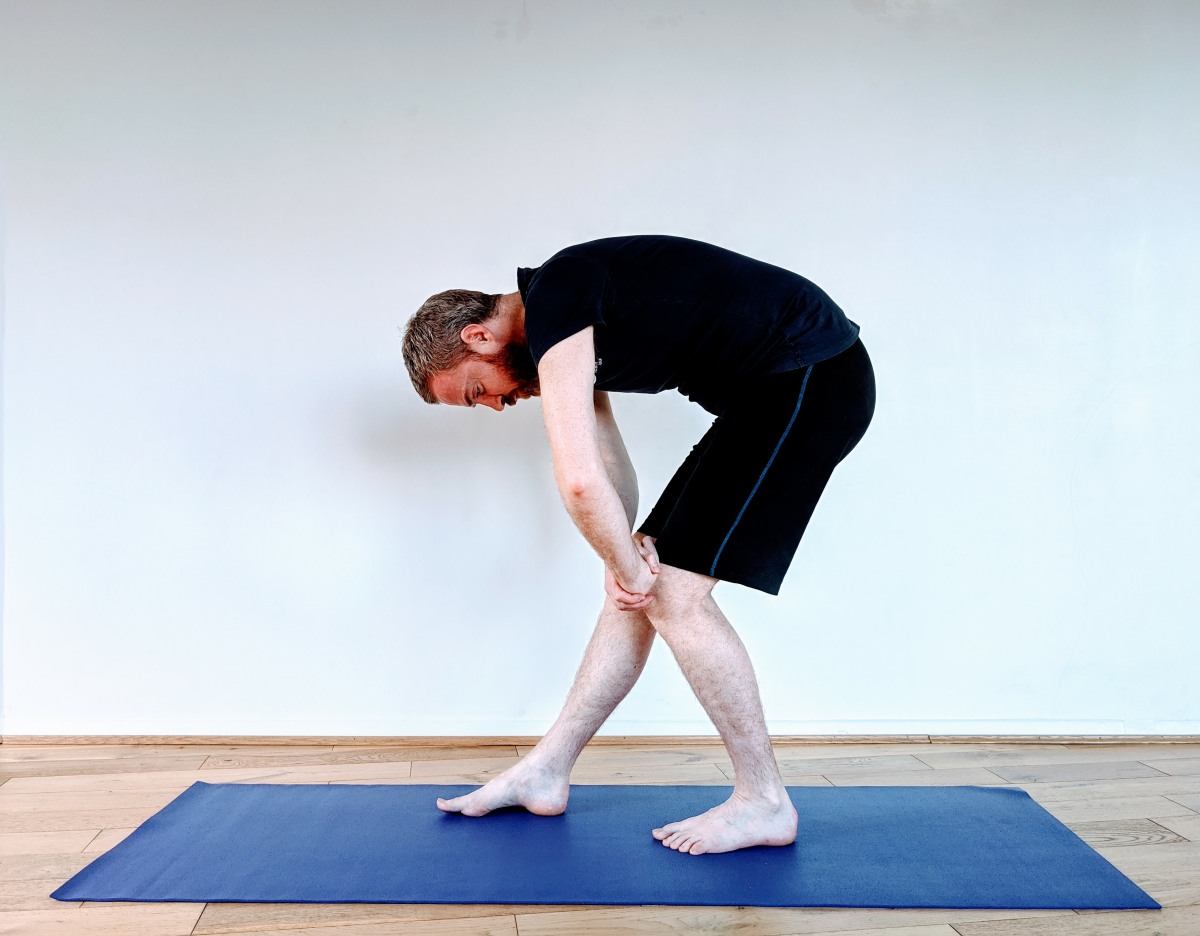The hamstings are the name for the group of muscles at the back of the leg. The orginatey (start) on your sitting bones, which is technically called the Ischial Tuberosity, and finish on the back of the shin bone just below the knee joint. It is the connection to the sitting bones that needs to be kept in mind when trying to stretch into the hamstrings.
These are postural muscles that help to keep us upright. Many of us can develop tight hamstrings which seems to correspond to the sedentary lifestyle and not bending to pick stuff up off the floor. People seem to want to have really loose hamstrings, but generally being able to lift your leg to about 90 degrees is about right.
Equipment
None
Steps
- Stand with your feet hip width apart.
- Take a step forward with one foot, keeping your toes pointing forward. I generally suggest having the space between the 2nd and 3rd toe directly in front of the middle of the ankle.
- Bend the back knee, and hinge forwards by tilting the pelvis, and sticking your bottom out. I tend to get people to think about pointing their sitting bones behind them as if they are “mooning” anyone standing behind them.
- Keep the back reasonably flat, as if you alow it to curve too much then the pelvis may not be moving too much, which is the shortcut that most of us use to not get into the hamstrings.
- Hold this for at least 30 seconds and allow yourself to soften into the stretch.
- Repeat with the other leg.


Better way: moving the pelvis to stick sitting bones out.

Less effective, as the pelvis hasn’t moved and just the back rounding.
Things to be aware of:
- The movement should feel like the pelvis is starting the movment by tilting forwards, if not then you might be using the low back to get the head down.
- If your hamstrings are tight and you put your leg on a bench then you are likely to tilt your pelvis backwards and start from a less stable position, if your hamstrings are long enough that you can get your hands on your feet then ask yourself why you want to have anymore length in them (unless you are a dancer).
- Lifting the foot/toes gets the calf as well. Weeelll, not really. If might feel like it, but you might just be feeling a stretch into the sciatic nerve, which runs the length of the leg from low back to the tip of the toe. Nerves do not like to be held into a static stretch. I suggest doing the Calf stretches which can then be targeted to the different compartments.
Why do I say to hold the static stretch for 30 seconds? I put it like this: the first 10 seconds it feels like the muscles are shocked into wondering what this position is. Then the next 10 seconds they start to relax into the position, and the final 10 seconds they might also be able to move a bit deeper into the movement, and accept that this is possible.
Video
Here’s a short video of me running through the exercise. If you want to make it bigger then click on the four arrows.
Tim


